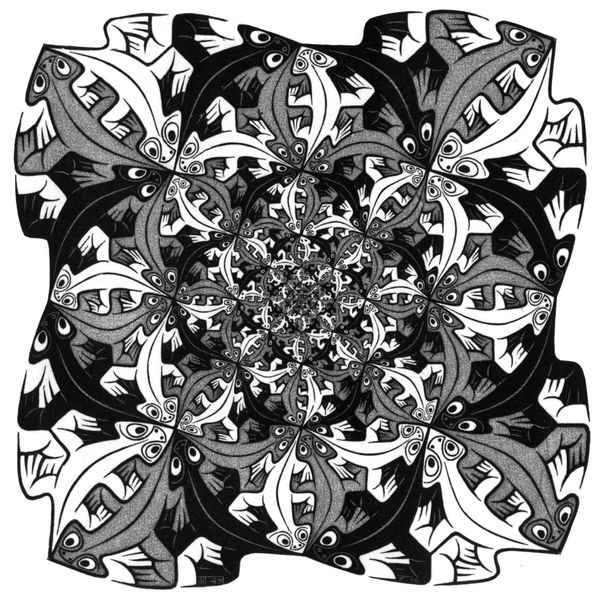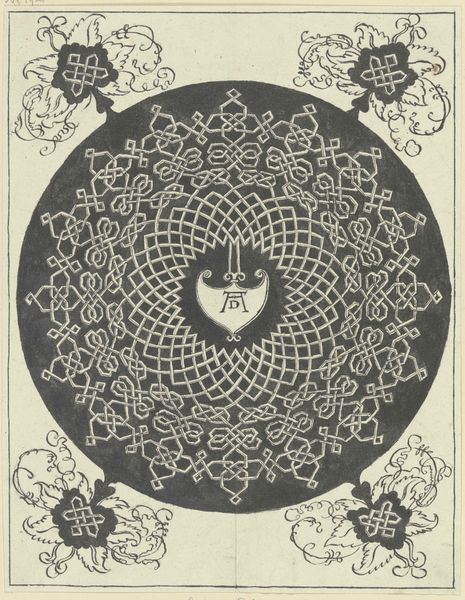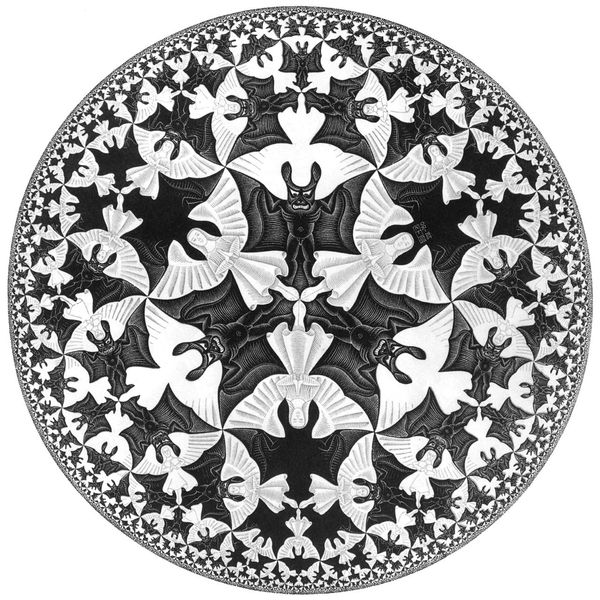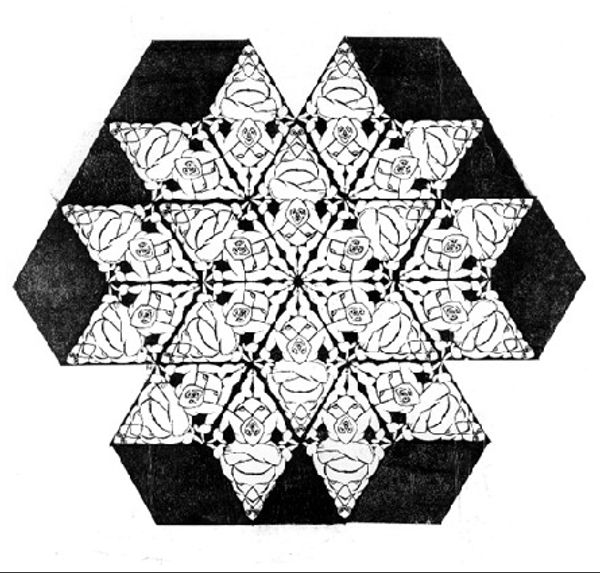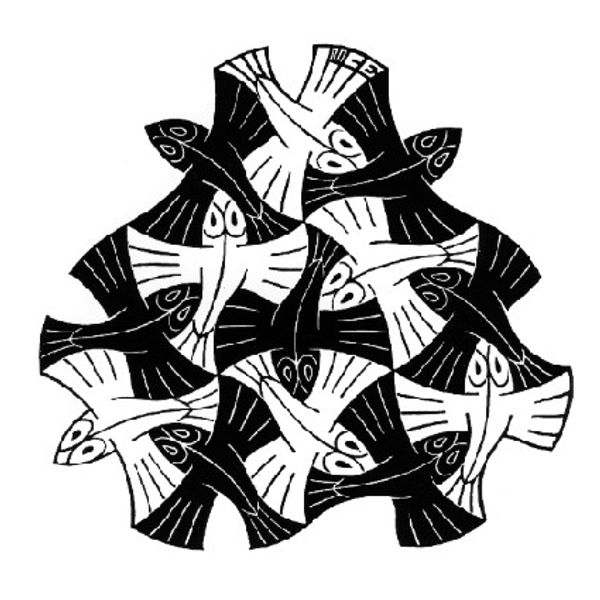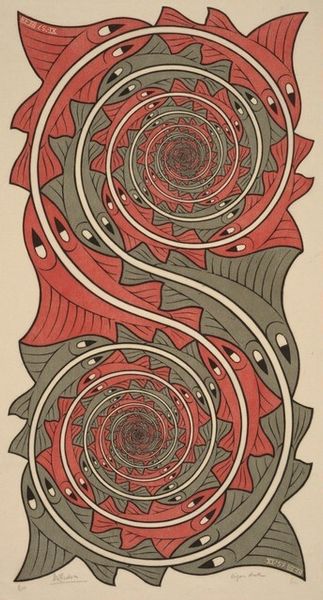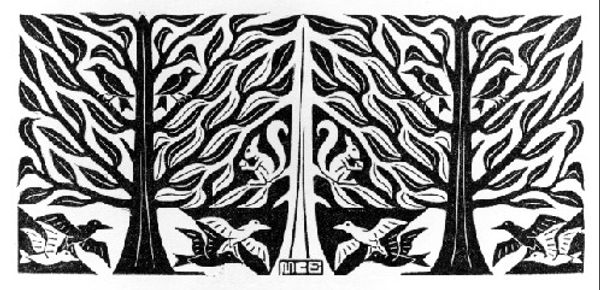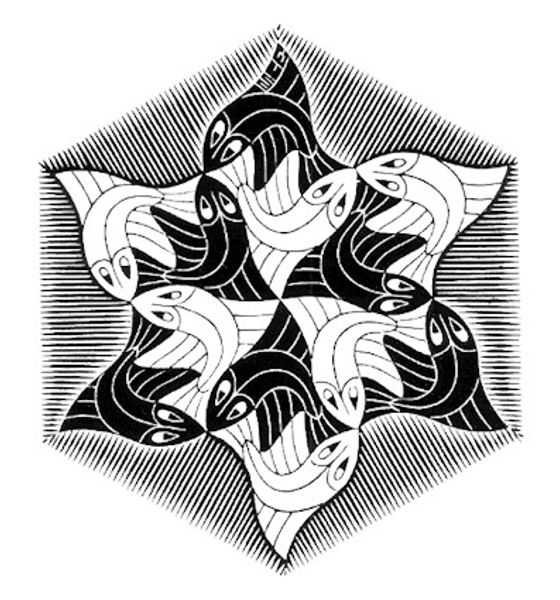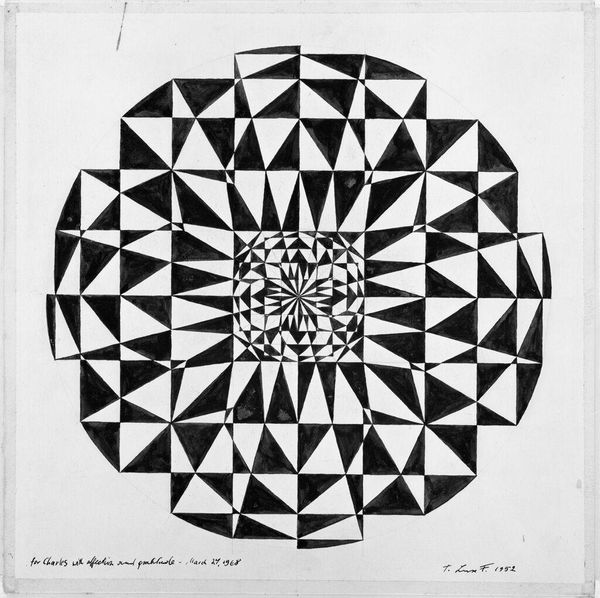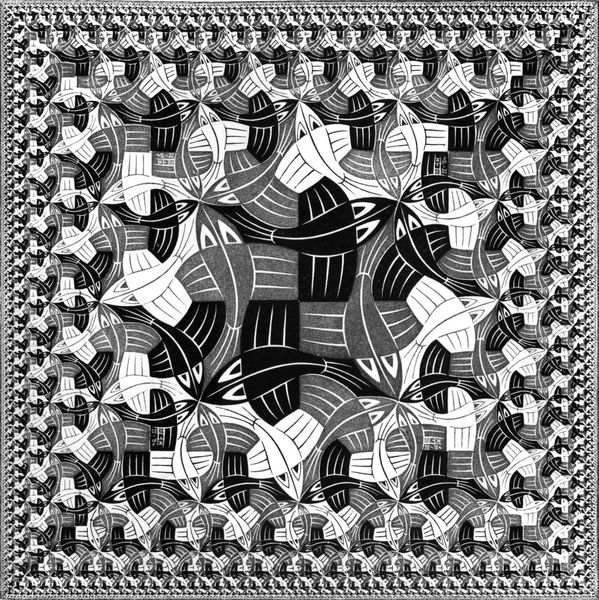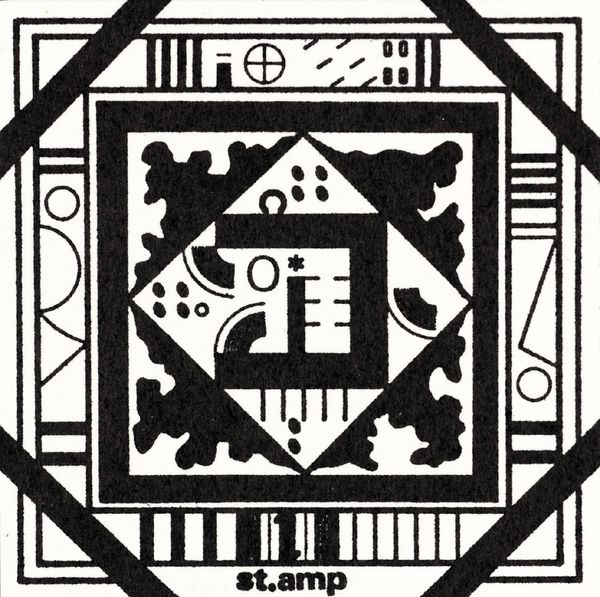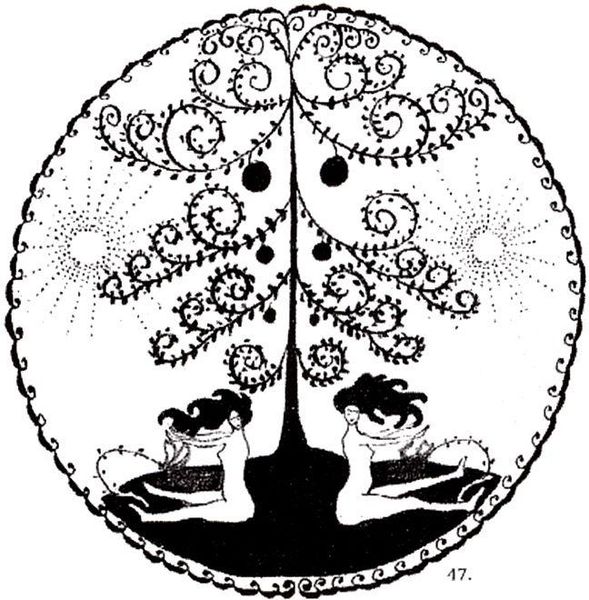
Copyright: M.C. Escher,Fair Use
Editor: Here we have M.C. Escher's "Circular Fish," a graphite drawing from 1959. The tessellating pattern of black and white fish really draws the eye inward. It's quite mesmerizing, almost hypnotic. What strikes you most about this work? Curator: It's interesting how Escher utilizes the *process* of tessellation – the way he interlocks these figures – not just as a mathematical exercise but as a commentary on industrial production itself. Think about the way these fish are rendered. It almost looks like they're stamped out or manufactured, don't you think? Editor: That's a very different way to look at it! I was just seeing the fun optical illusion. Curator: But where do those illusions come from? Consider Escher's use of black and white. What does that simplification achieve? It creates a kind of efficient, almost streamlined visual. Like mass production, doesn’t it? There's a distinct absence of anything naturalistic. These fish are design objects, conceived within specific material and economic constraints. He makes drawings that function like prints, multiples made by the artist that enter the marketplace like other goods. Editor: So you’re saying it is the making, more than the image itself that is important? Curator: Precisely. It's the labour and the means through which this intricate visual is realized. Escher highlights our tendency to want mass-produced perfection even in art by carefully constructing these prints in simple color. Editor: That is so cool. I never thought of the printmaking process reflecting manufacturing... Curator: Thinking about materials opens so many new questions! I will be paying closer attention to processes from now on.
Comments
No comments
Be the first to comment and join the conversation on the ultimate creative platform.
